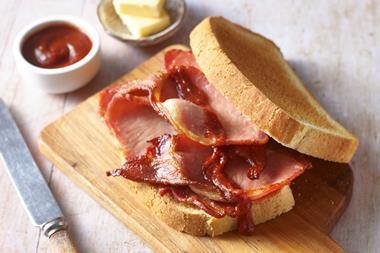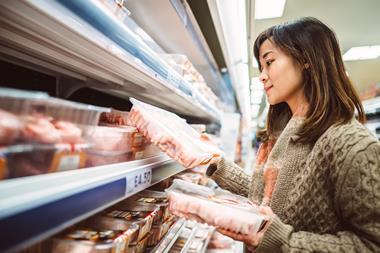Growing global demand and falling flock sizes have led to sharp price rises and depressed sales for lamb. How can suppliers fight back, asks Julia Glotz
When grain prices started soaring last year, lamb which is mainly fed on grass should have been at an advantage over other meats. Instead, prices climbed more spectacularly than those of any other protein.
Average farm prices were 93p higher this month than in 2010, rising from £4.30/kg to £5.23/kg, while retail prices for steaks were up 37p on average, from £12.97/kg to £13.34/kg [AHDB]. As a result, a leg of lamb is a more serious investment than an everyday family meal these days.
Behind the price increases lies a fundamental change in availability. The UK sheep breeding flock, the biggest in the European Union, has dropped from 15.6 million to 13.86 million since 2005, and it will take a long time before farmers can build up production again, says Nick Allen at Eblex. It’s a similar story in New Zealand. Flock numbers are declining, plus China is increasingly competing for New Zealand meat.
With less lamb available, the message on price is clear, says Allen. “Lamb has become an expensive protein, and it will stay an expensive protein.”
As a result, retail sales are dropping off, and fewer shoppers are buying it, says Kantar client manager Stephen Lavery. Lamb volume sales were down 14.4% to 80,294 tonnes in the year to 20 March 2011, with value down 7% to £596.6m and more than 600,000 shoppers leaving fresh lamb in the latest year [Kantar Worldpanel].
High prices have also raised fears the meat could drop off restaurant menus. Across foodservice as a whole, lamb is holding up reasonably well, with the number of meals served in 2010 marginally up (0.3%) on 2009 [NPD Crest 52w/e 31 December 2010]. But at the budget end of foodservice, sales are suffering. Last year, the quick-service restaurant sector takeaway outlets and kebab shops served 4.9% fewer lamb meals than in 2009.
With high prices here to stay, the lamb sector now has to work harder than ever to convince shoppers their meat is worth paying more for, believes Allen. Part of that involves making lamb more attractive to consumers.
Eblex is working with farmers to ensure lambs aren’t kept too long, which can lead to greater levels of fattiness. It will also work with the wider industry on how lamb can be presented better, focusing on attractive cuts, and highlighting the need for enough shelf space.
Waitrose is picked out by many industry experts as the retailer that already does a lot of good work in this area, but elsewhere there is room for improvement. “Some lamb is not presented very well, and consumers are concerned it’s fatty, leading to plate waste,” says Allen.
If all else fails, the fact that other meats are expected to see substantial retail price hikes in the near future could lend a helping hand. As Allen says: “Other proteins will go up because of the price of cereals, so lamb will start looking cheaper.”
Read the full Meat & Fish Supplement 2011
Sign in to comment on this article
Not logged in before? Register for FREE guest access today.
You will be able to:
- Read more stories
- Receive daily newsletters
- Comment on stories
Advert


















No comments yet